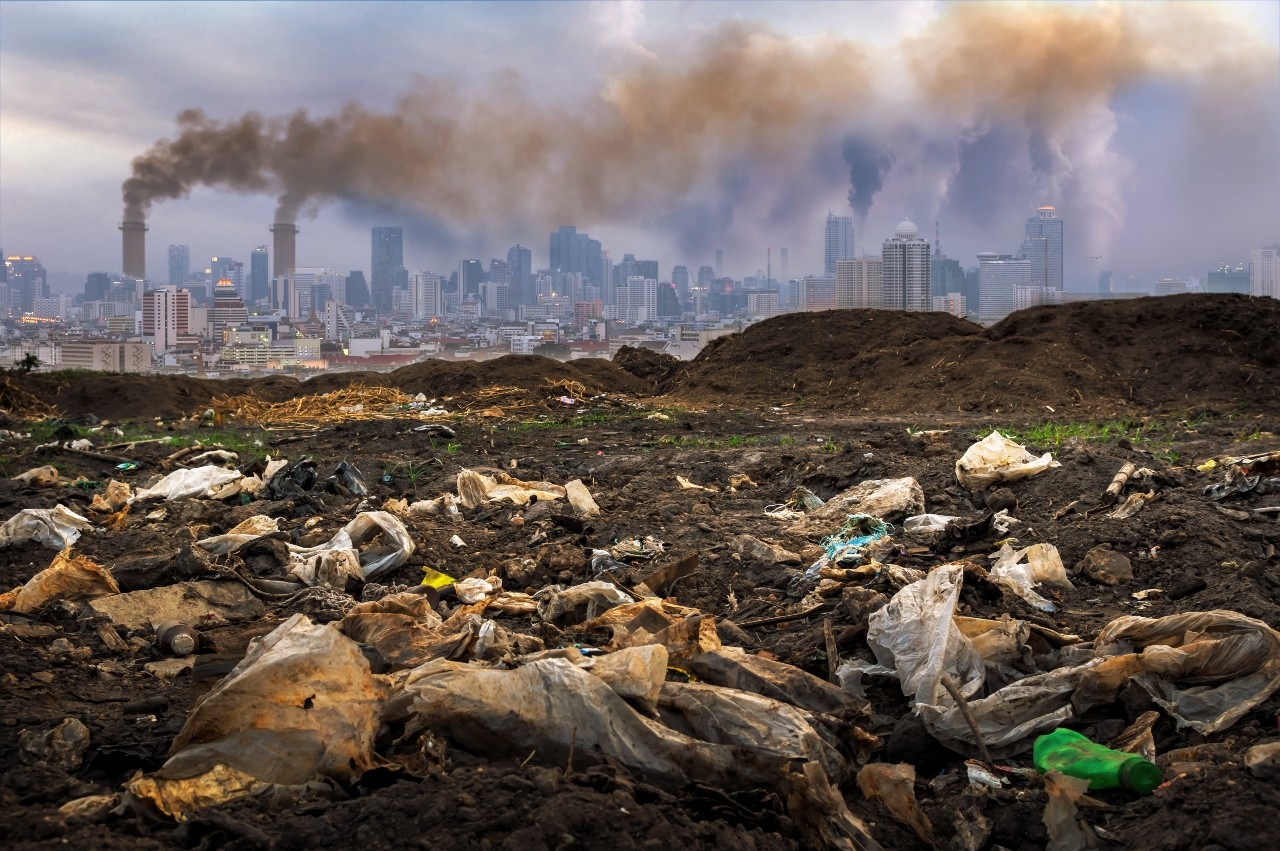Waste Generated from Chemical Industry

Overview
The chemical industry, with its wide array of processes and products, generates multiple types of waste that require specialized management techniques to minimize environmental impacts. For Small and Medium Chemical Manufacturing Industries, understanding these waste types is essential to ensure regulatory compliance, enhance sustainability and optimize operational costs. This section presents a comprehensive and technical analysis of the various types of waste generated, classified into solid, liquid and gaseous waste. Detailed information is provided on sources, pollutants, environmental impacts and advanced management practices to help industries develop effective waste management strategies.
📌 Type of Waste in Chemical Industry:
🗑️ 1. Solid Waste:
Solid waste in the chemical industry can be hazardous or non-hazardous, based on its composition and risk potential. Effective management of solid waste involves a mix of reduction, recycling, treatment and disposal techniques.
A. Hazardous Solid Waste:
1. Sources:
- Process Residues: Spent catalysts with metals like platinum, nickel and chromium.
- Filtration Residues: Contaminated filters, ion-exchange resins and sludges from effluent treatment plants.
- Obsolete Chemicals:Expired raw materials, intermediates and products.
- Spent Adsorbents:Activated carbon and silica gel from purification processes.
2. Key Pollutants:
- Heavy Metals: Lead, cadmium, mercury, chromium (Cr⁶⁺).
- Organic Pollutants: PCBs, phenols and PAHs.
- Halogenated Compounds:Chlorinated and brominated compounds.
3. Environmental Impact:
- Leaching: Heavy metals and organics contaminating soil and groundwater.
- Bioaccumulation:Persistent organic pollutants in aquatic life.
- Soil Degradation:Reduced microbial activity and fertility.
4. Advanced Management Techniques:
- Thermal Treatment: High-temperature incineration (>1,200°C) with flue gas scrubbing.
- Stabilization and Solidification:Immobilizing contaminants using cementitious materials.
- Plasma Arc Technology:Decomposition of hazardous organics into simple gases.
- Secure Landfilling:Multi-layer geomembranes and leachate collection systems.
B. Non-Hazardous Solid Waste:
1. Sources:
- Packaging materials like HDPE drums, paper and cardboard.
- Inorganic sludges and ash from boilers.
- Biomass residues in bio-based processes.
2. Key Characteristics:
- Inert: Low reactivity and leaching potential.
- Biodegradable:Organic waste suitable for composting
3. Advanced Management Techniques:
- Recycling: Mechanical recycling of plastics and metals.
- Waste-to-Energy (WTE):Incineration with energy recovery.
- Anaerobic Digestion:Biogas production from organic waste.
🌊 2. Liquid Waste:
Liquid waste includes a wide range of effluents containing organic and inorganic pollutants. Effective treatment is crucial for compliance with environmental discharge limits.
A. Hazardous Liquid Waste:
1. Sources:
- Spent Solvents: Toluene, acetone, methylene chloride.
- Acidic and Alkaline Waste: Sulfuric acid, hydrochloric acid, sodium hydroxide.
- Electroplating Effluents:Cyanides and heavy metals like chromium and nickel.
2. Key Pollutants:
- COD/BOD: Indicates organic load and biodegradability.
- Heavy Metals: Lead, mercury, arsenic.
- Toxic Organics:Pesticides, phenols, phthalates.
3. Advanced Management Techniques:
- Membrane Bioreactors (MBR): Combines biological treatment and filtration.
- Advanced Oxidation Processes (AOPs):Fenton’s reagent and ozonation for breaking down organics.
- Zero Liquid Discharge (ZLD):Evaporators and crystallizers for water recovery.
- Electrodialysis:Selective removal of ions.
B. Non-Hazardous Liquid Waste:
1. Sources:
- Cooling water, boiler blowdown, stormwater runoff.
2. Management Techniques:
- Reverse Osmosis (RO): Desalination and recycling.
- Constructed Wetlands:Natural biological treatment.
- Sequential Batch Reactors (SBR):For intermittent wastewater flows.
🌬️ 3. Gaseous Waste:
Gaseous emissions include a variety of pollutants from combustion and chemical processes. Advanced air pollution control systems are required for compliance with regulatory standards.
A. Hazardous Gaseous Emissions:
1. Sources:
- Combustion processes (boilers, incinerators).
- Solvent evaporation and chemical reactions.
2. Key Pollutants:
- Volatile Organic Compounds (VOCs): Benzene, toluene, xylene.
- Acid Gases:SOx and NOx causing acid rain.
- Greenhouse Gases:CO₂, methane.
3. Advanced Management Techniques:
- Selective Catalytic Reduction (SCR): For NOx control.
- Regenerative Thermal Oxidizers (RTO):For VOCs.
- Carbon Capture and Storage (CCS):Capturing CO₂ for storage or reuse.
- Biofiltration:Microbial treatment of VOCs.
B. Non-Hazardous Gaseous Emissions:
1. Characteristics:
- Steam, CO₂, nitrogen, and other inert gases.
2. Management Techniques:
- Heat Recovery Systems: For steam and flue gases.
- Carbon Dioxide Utilization:For carbonation or enhanced oil recovery.
♻️ Integrated Waste Management Strategies:
1. Waste Minimization:
- Process optimization and resource efficiency.
2. Recycling and Resource Recovery:
- Material recovery from waste streams, such as metals and solvents.
3. Safe Disposal:
- Complying with Hazardous Waste Management Rules for secure disposal.
4. Employee Training:
- Training on waste handling, segregation and emergency response.
🏞 Benefits of Advanced Waste Management:
- Regulatory Compliance: Adherence to CPCB and SPCB standards.
- Cost Efficiency:Reduced disposal and raw material costs.
- Enhanced Reputation:Positive brand image and market access.
- Environmental Sustainability:Lower emissions and resource conservation.
By adopting advanced waste management practices, Small and Medium Chemical Manufacturing Industries can transform waste into resources, ensuring both compliance and sustainability.
